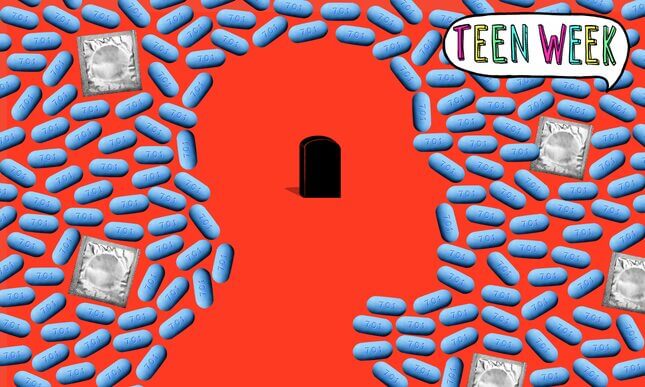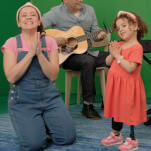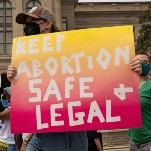
Teens today have never known a world where HIV was a certain death sentence. They missed the “plague years” of AIDS—the confusion, the pop-cultural discussions, the general feeling of hopelessness regarding the disease. This is sometimes referred to as “historical privilege.” It means that through no fault of their own, teens could be unaware of the enormity of the epidemic—the havoc it wreaked, the damage it is still very much capable of causing.
By 1996, all of today’s teens were born and antiretroviral therapy had been tested and approved by the FDA. It proved to be so effective at extending lives that many have come to regard HIV as a manageable chronic condition. That view is simplistic: it ignores the several systemic and cultural barriers for populations hit hardest by HIV (like trans women, black women, and black MSM—men who have sex with men—particularly in the South). But despite (and in some cases, because of) teens’ lack of experience with the worst effects of the AIDS crisis, they remain an at-risk group.
According to the CDC’s most recently reported numbers, U.S. citizens aged 13-24 accounted for 22 percent of new HIV diagnoses in 2015. That’s a number disproportionate to the overall population, albeit slightly—in 2013, the year for which the most recent Census breakdowns by age are available on the Census Bureau website, people aged 10-24 made up 20 percent of the U.S. population (When it comes to these numbers, “teens” are generally assessed within the broader group of people aged 13-24, the U.S.-government approved definition of “youth.” It bears mentioning that 80 percent of the diagnoses detailed above occurred in youth aged 20 to 24).
If everyone at risk were treated, the theory goes, HIV would disappear. But you can’t treat what you aren’t aware of.
“With medicine being what it is, this should be a non-issue,” said Emily Brown, field organizer at Georgia Equality, an LGBT advocacy organization based in Atlanta. But because of a storm of factors, HIV remains an issue for a generation that should be shielded by medical technology—antiretrovirals decrease viral load in HIV positive people to the extent that the disease becomes undetectable in blood tests and exponentially more difficult to transmit, if not impossible in the majority of cases. They also protect HIV negative individuals who take them from contracting the virus, via what’s called PrEP (or pre-exposure prophylaxis) with efficacy up to 99 percent. If everyone at risk were treated, the theory goes, HIV would disappear.
But you can’t treat what you aren’t aware of. According to the CDC, only 10 percent of sexually experienced high school students have been tested for HIV.
“That’s a failure of the system for youth,” said Adam Leonard, a nurse practitioner with the San Francisco Department of Public Health who provides PrEP and HIV care to youth and works as an assistant clinical professor of nursing at the University of California at San Francisco. “It means we’re not having conversations with youth in the first place. We’re making assumptions about youth who are and are not ‘at risk’ for HIV or youth aren’t willing to disclose their sexual activity because of stigma.”
The lack of dialogue is key, according to the dozen or so experts—doctors, youth educators, youth living with HIV—I interviewed for this article. This is not an easy to talk about, and given the cultural intersections of 2017—the “historical privilege” combined with the considerable rates of new infections among youth—it’s a difficult subject for some teens to wrap their heads around. A Kaiser Family Foundation survey from 2012 found that “most young people say they are not hearing much about HIV/AIDS. Three out of five say they ‘rarely’ (37 percent) or ‘never’ (27 percent) saw or read any news coverage about HIV/AIDS or other STDs in the last year. It is also not coming up much in everyday conversation: 39 percent say HIV or other STDs have not come up at all in the last year.”
It gets worse: Though the majority of respondents to that survey of 15 to 24 year olds said they’d feel “comfortable” being close friends or working with someone who is HIV positive, the majority also said they’d be uncomfortable being roommates with, having their food prepared by, or being in a relationship with someone who is HIV positive. According to Gilead, the drug company that makes Truvada (thus far the only FDA-approved form of PrEP), people who were under 25 years old who started PrEP in the survey period (2012, when it was approved to September 30, 2015) comprised just 7.6 percent of PrEP users in the U.S.
A Shared Risk
HIV disproportionately affects certain populations—including with U.S. youth. It follows that out of the 8,807 youth who were diagnosed with HIV in the United States in 2015, the vast majority (81 percent) were MSM. Out of the newly diagnosed male youth, 55 percent were black, 24 percent were Hispanic/Latino, and 16 percent were white. It’s worth noting that, per the pioneering research of Greg Millett, black MSM have not been found to engage in riskier behavior than white MSM.
-

-

-

-

-

-

-

-

-

-

-

-

-

-

-

-

-

-

-

-

-

-

-

-

-

-

-

-

-

-

-

-

-

-

-

-

-

-

-

-








































